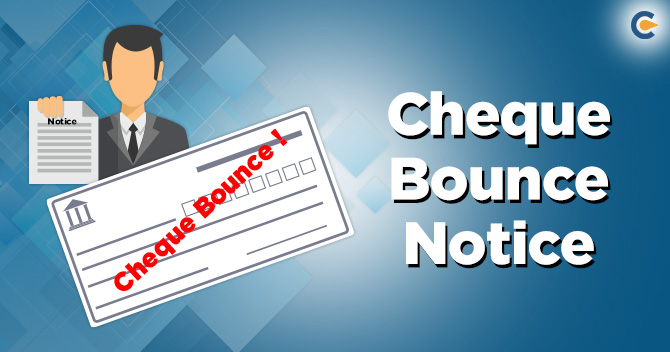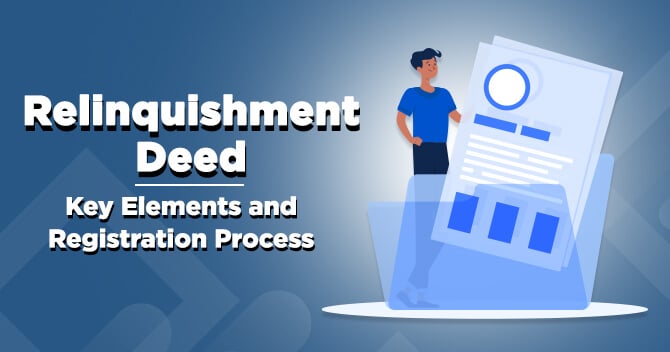over the years we have observed a gradual shift from traditional money remittance methods like money orders, cash, Cheque etc. to online transactions, however, while carrying out a transaction of a large sum of money, transferring money through a cheque is still a preferred choice among many. Cheque serves as a secure option since hard cash is not involved during the transfer process. Hence the fear of loss or theft is minimized. Cheque is an essential element of the financial system in different countries across the globe. A cheque transaction is marked as one of the safest ways of steering business since it leaves an entry against the Cheque respected by the bank, which can be further tracked when necessary. While talking about Cheque, the first thing that strikes our subconscious mind is cheque bounce because we all at some point in our life must have heard this term. In this blog, we shall learn more about what is cheque bounce and how can you send a legal notice for cheque bounce.
Parties Involved with a Cheque
In a payment through Cheque, there are three parties involved for on-track movement of money through a written piece of paper source. The three parties involved are as follows:
- Drawer
He/she is the customer or account holder who issues the Cheque.
- Drawee
It is basically the bank on which the Cheque is drawn and is called the ‘Drawee’.
- Payee
The individual who is named in the Cheque for getting payment is known as the ‘Payee’.
What is a Cheque Bounce?
Cheque bounce is basically a term used to define the unsuccessful processing of a dispensed cheque[1] due to several reasons. Non-sufficient funds in the issuer’s account are one of the main reasons for a bounced cheque. Passing a fraud cheque can be illegal, and this crime can be aggravated depending on the amount and whether this action involves crossing state boundaries. Reasons for a Cheque Bounce


Some of the major reasons for cheque bounce that should be avoided are as follows:
- Insufficient Funds
In case your account lacks funds from which the Cheque is issued, there is a very high probability of the Cheque resulting from bouncing. Further, if a cheque bounces, the bank will levy a nominal penalty imposed on both the parties- the issuer as well as the depositor. Later, the issuer has the option to either issue a new cheque or resolve the issue with the receiver of the Cheque. The receiver of the Cheque can also start legal action against the issuer for non-payment and cheque dishonour.
- The wrong date mentioned on Cheques
Most people consider the date as a small factor but can cause serious issues with your Cheque not getting processed. Any difference or problem with a date would lead to cheque bounce. Typical issues that a cheque issue faces include disfigured or scribbled numbers. In case the date written on Cheque has expired, then it inevitably gets dishonoured.
- Mismatch of Signature
This is one of the most common reasons for cheque bounce faced by people while issuing cheques. In case the signature is mismatched or doesn’t match with the bank records, the issued Cheque will be tagged as a bounced cheque. Therefore, it advised signing the Cheque carefully.
- Damaged Cheque
Various banks across India don’t entertain disfigured cheques on which the details are not visible. Moreover, your Cheque is likely to bounce if it has lots of stains or marks.
- Overwriting on Cheque
Banks don’t accept any scribbling, correction, overwriting on a cheque. Such a cheque with overwriting would bounce immediately. It is advised to use a fresh cheque if any mistake occurs while filling the previous Cheque.
How to Draft a Cheque Bounce Notice?
While drafting a Cheque bounce notice, one needs to be extra cautious. Since it is the intimation about future legal action, the notice needs to be framed accordingly. Once the drafting is completed, it is required to take a print on a plain paper or on the letterhead of the business thereafter it is delivered to the cheque issuer.
Cheque bounce notice must contain the following:
- Name of the cheque beneficiary,
- Name and address of the check issuer.
- The return date of the Cheque.
- Reasons for cheque return.
- Request made to check issuer for immediate alternate payment and
- If payments are not made accordingly, the drawer can approach the Court and file a criminal complaint under Section 138.
Read our article:Corporate Frauds: A Comprehensive Study
Key requirements for Legal Notice for Cheque Bounce
Following are the key requirements for Cheque Bounce notice-
- The first condition is that the Cheque should be towards a specific liability.
- It should be within a validity period of 6 months.
- Due to insufficient funds, the bank must have returned the Cheque.
- The notice should be given within 30 days of cheque bounce.
- The drawer has failed to make the payments within 15 days of Cheque bounce notice; legal action can be taken against him within 30 days.
The Procedure for Cheque Bounce Notice
- The Drawee has to firstly send a demand notice to the drawer within 30 days of return memo through a registered post.
- Once the notice is received, the drawer has to make the payment within 15 days.
- If the payments are not made, the Drawee has the right to lodge a complaint.
- Once the Court receives a complaint, the accused will be summoned.
- The proceeding will be initiated under Section 138 of the Negotiable Instrument Act.
Replying a Cheque Bounce Notice
It is important to reply to a legal notice since legal notice is an official document sent with respect to taking legal action against a person for non-payment of the amount mentioned in the Cheque. It is advised to consult a legal expert.
Once you receive a legal notice, you have the following options:
- Either to provide the payment or compensation that the sender has asked for, known as a settlement.
- Or reply to the legal notice defending yourself.
If you choose to reply to legal notice following pointers should be kept in mind:
- The reply of the legal notice should be addressed to the lawyer of the person who sent you the legal notice.
- Mention your name, address and description.
- List the facts of the issues with relevant dates and time, along with refuting the allegations made against you.
- Any of the claims mentioned in the legal notice should not be accepted.
- Provide a summary of your defence.
Any legal notice for the dishonour of Cheque provides a time limit within which reply has to be sent.
Take Away
Banks across the country witness cheque bounce cases daily. Therefore in India, we have laws in place to help us handle cases of cheque bounce. There are various reasons as mentioned above, which may lead to a bounced cheque. Now when the Cheque bounces, the next step is to send a legal notice to the defaulter. It is advisable to hire an expert lawyer who will assist you in filing and drafting of legal advice for cheque bounce.
Read our article:Here are the Steps to File a Consumer Complaint in India











